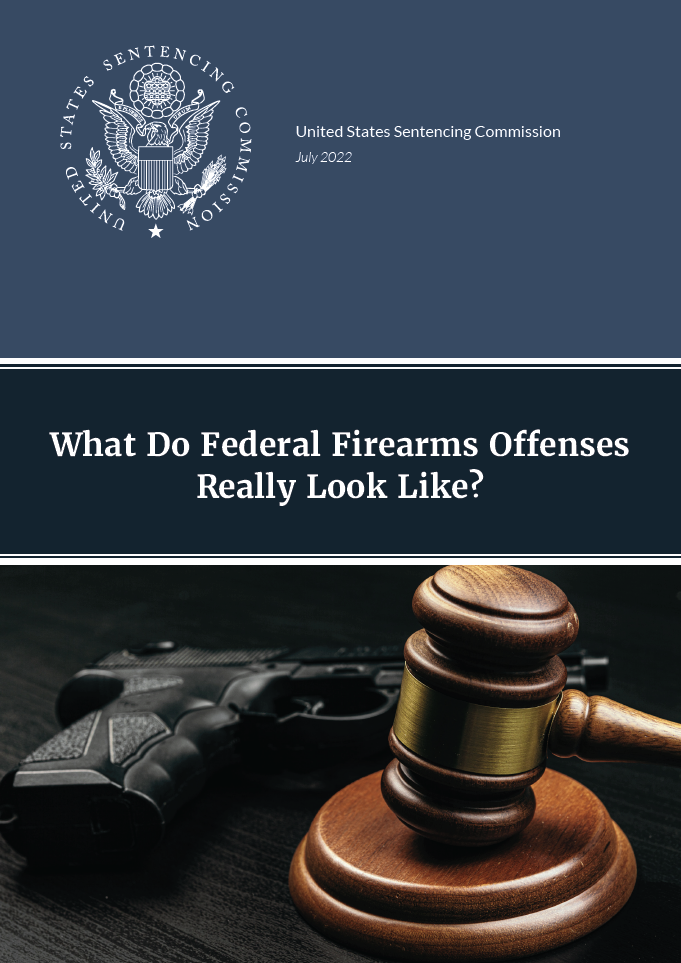Overview

Key Findings
-
Firearms offenses are among the most common crimes prosecuted and sentenced in federal court.
- Section 2K2.1 was the third most frequently applied guideline in fiscal year 2021.
- Section 2K2.1 cases have increased by 45.3 percent since fiscal year 2015, from 5,325 to 7,735 cases in fiscal year 2021.
- Section 2K2.1 offenders represent 40 percent of the caseload in five districts.
-
The guidelines exert a strong influence on the sentences imposed in firearms cases.
- In fiscal year 2021, half (49.6%) of the felony offenders sentenced under §2K2.1 received a sentence within the guideline range, which is approximately ten percentage points higher than the within guideline range rate for all other offenders.
-
Firearms offenders sentenced under §2K2.1 have criminal histories that are more extensive and more serious than other offenders.
- Firearms offenders were more than twice as likely to have a prior conviction for a violent offense compared to all other offenders (60.6% compared to 29.0%).
-
The vast majority of firearms offenders (88.8%) sentenced under §2K2.1 were prohibited from possessing a firearm.
- Prohibited persons include offenders with a prior felony conviction or status in another prohibited class, such as aliens unlawfully in the United States, fugitives from justice, or persons who unlawfully use or are addicted to controlled substances.
-
In addition to most §2K2.1 offenders being prohibited from possessing a firearm, firearms offenders often engaged in aggravating criminal conduct.
- In more than one-quarter of §2K2.1 cases, the firearm facilitated, or had the potential to facilitate, another felony offense (most commonly drug trafficking).
- In 11.0 percent of §2K2.1 cases, an offender or co-participant discharged a firearm. In these cases, death resulted in 4.1 percent of the cases and injury to another person in 18.3 percent of the cases.
-
Firearms offenses often involved stolen firearms or particularly dangerous weapons.
- Approximately one-third (32.4%) of the offenders prohibited from possessing a firearm committed an offense involving a stolen firearm or firearm with an altered or obliterated serial number.
- Nearly one-quarter (23.6%) of the offenders prohibited from possessing a firearm committed an offense involving a prohibited weapon (such as a sawed-off shotgun or machine gun).
-
The average sentence for §2K2.1 firearms offenders varied depending on the presence of aggravating factors.
-
Prohibited persons who did not engage in aggravating conduct received an average sentence of 35 months. Courts imposed longer sentences on prohibited persons whose offenses involved:
- a stolen firearm or a firearm with an altered or obliterated serial number (55 months);
- a prohibited weapon (such as a sawed-off shotgun or machine gun) (58 months);
- trafficking in firearms (62 months); or
- the use of, or conspiracy to use, a firearm in connection with a crime of violence or drug trafficking crime (119 months).
-
Prohibited persons who did not engage in aggravating conduct received an average sentence of 35 months. Courts imposed longer sentences on prohibited persons whose offenses involved:
